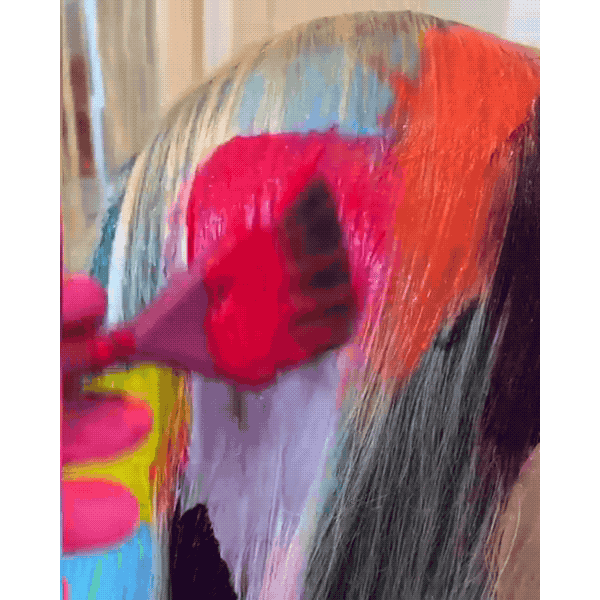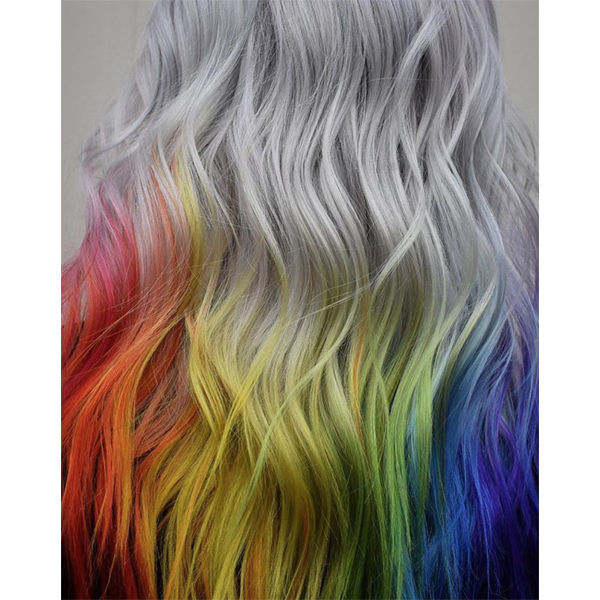Creative Color: 6 Tips To Perfect The Process
6 Creative Color Tips To Get You Started
Nothing gets a double-tap on Insta faster than cool, striking unconventional haircolor. It’s definitely not for everyone, but there are always a few clients who are willing to become a living canvas for some of your cooler ideas.
Whether you’re a newbie to creative color or have been in the game for a while, we spoke to color queens Janine Ker (@janine_ker_hair) and Ursula Goff (@uggoff), as well as BTC Team Members Caitlin Ford (@caitlinfordhair), Kristina Cheeseman (@kristinacheeseman) and Kayla Boyer (@kayla_boyer) to get their expert tips and tricks to creating a masterpiece!
Products Used
1. Get Organized
As you already know, everything will go a lot easier if you have your tools and materials on hand before you get started. “I like to start out clean and organized,” says Kristina. “Having a damp towel next to me to wipe my hands off…so I don’t contaminate the colors and having my clips and brushes set up nicely and clean.”
It also helps to plan out your designs before hand so you have a clearer path to your end goal. “If I am doing a very intricate design I like to map out what I’m doing on paper,” says Caitlin. “I’ll paint lines of color on paper in the order I plan to use it and keep it next to my color bowls so I can glance at it to stay on track.”
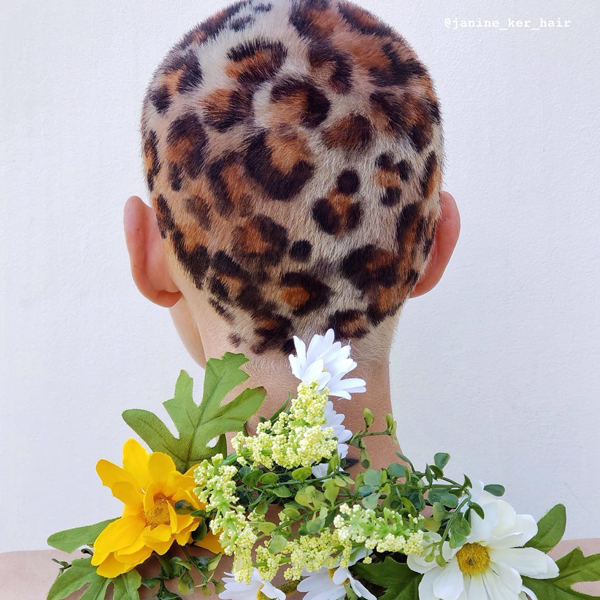
2. Have The Right Tools
Whether creating precise lines for rainbow designs or freehand painting flowers in a client’s hair, you’ll need more than your standard paint brush to get the job done. “I use paint brushes, tape, stencils, scissors and clippers most often. Using clippers, or specifically edgers, to carve out designs is my favorite because it renders the designs even further and makes them come alive,” says Janine.
Caitlin adds, “The main tools I use are meche and clear balayage film. I use the meche to give myself a flat stable surface to work on and I use the balayage film to press my new partings onto previously saturated sections to help saturate the new section. I also use the film to protect my finished sections.”
3. Take Your Time
This is one hair process that you don’t have to rush through and your client will appreciate the extra time you took to get their hair just right. “Make sure to take subsection sizes that you can handle and are capable of controlling,” says Kayla. “If you are doing something intricate, take very small sections to ensure proper saturation! Take your time and try not to rush through things.”
Janine adds, “I like to take the design itself into consideration and its ability to effectively translate to hair. Some things get lost in the translation. For that reason, I like my designs to be fairly simple and to the point. I would say a huge part is precision and not cutting corners. That is why the work takes so long to make.”
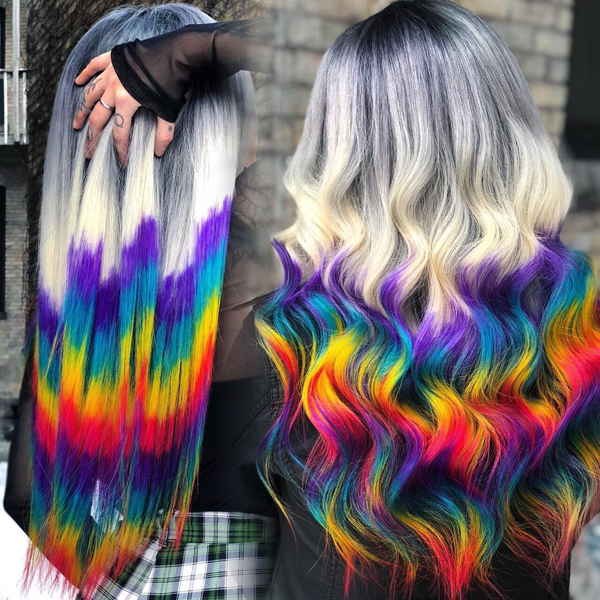
4. The Consultation Is Important
Cool, unconventional haircolor comes with a lot of upkeep that your clients may not realize or be prepared for. It’s important that you have a thorough consultation with them before hand so they realize what they’re getting into. “When consulting for a vivid, I always ask how often they are willing to come in. I will only perform a global lightening on clients as long as they agree to come into the salon at least every six weeks to touch it up,” says Kayla.
“During the consultation I talk a lot about long term expectations and being realistic. The more intricate the design, the harder it is to keep up. Therefore with placement it’s sometimes better to just do intricate work on smaller sections of the hair,” says Caitlin. “Such as small color blocking along the hairline that gets pulled back or coloring only a thin section along the parting so that the color ‘veils’ over the rest of the hair. I show them pictures of other work I’ve done when it fades so they know what to expect.”
5. Creative Color Is High Maintenance
Do your creative color clients complain about fading but are still using over-the-counter hair products? Try this: “I always tell my clients to take care of their hair the same way that I’m taking care of it in the salon, so using cold water is always the most important thing,” says Kayla. “I have all my clients live with the PRAVANA ChromaSilk Vivids Color Protect Shampoo and Conditioner!”
“I recommend less heat styling, air-drying as much as possible and washing your hair as infrequently as possible,” says Kristina. “The Phantom Hydrating Dry Foam Shampoo by amika is a lifesaver… If you’re doing a color that’s within the same tonal family, I’d stock up on Tressa Watercolors Intense Shampoo in that color or sometimes I’ll make a custom conditioner using the pigment I used in their hair. Deep conditioning treatments are a must and coming in for your regularly scheduled haircut appointments.”
Ursula adds, “Use cold water to wash [the hair with] a sulfate-free shampoo. Only shampoo one to two times a week, avoid sun and swimming without color-saving products and minimize heat styling if possible.”
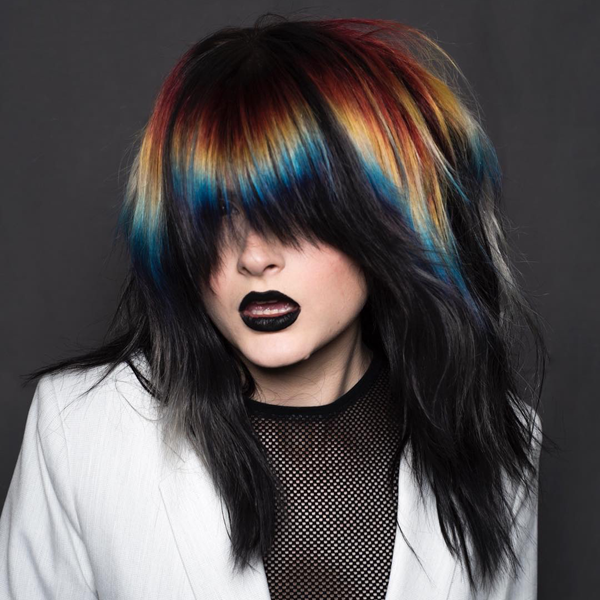
6. The Fade Out
How the color fades over time varies depending on the look and the client’s upkeep. “Most of the color work I do just fades to a pastel version of what we did. Sometimes it turns into an even prettier or more interesting concept over time, and occasionally I’ll like the fade so much that I’ll work with it for the next color we do,” says Ursula.
While it’s good to embrace the fade, you can also prolong color vibrancy (and prevent bleeding!) with something like Matrix Keep Me Vivid Lamination Spray—a fast post-color service that locks in color.
Kristina adds, “The designs usually fade out to a lighter version of the colors with blue always the last to remain. Depending on the vibrancy and depth of the colors used, that could shift the entire color family. If you don’t want that, use less pigmented vibrant tones. Cut those shades with a little clear or pastel versions.”
Depending on how short your client’s hair is, the grow out might be a bigger issue than the fade out. “The biggest challenge in my personal designs is the growth of the hair itself, since I do most of my creative hair art on buzzcuts,” says Janine. “The growth itself diminishes the design faster than the fading.”
How can you embrace the fade?! Check out these FOUR looks Ursula created on ONE client!
Looking For More Creative Color Tips? Click Here To Get 5 Tips For Wearable Rainbow Hair!



